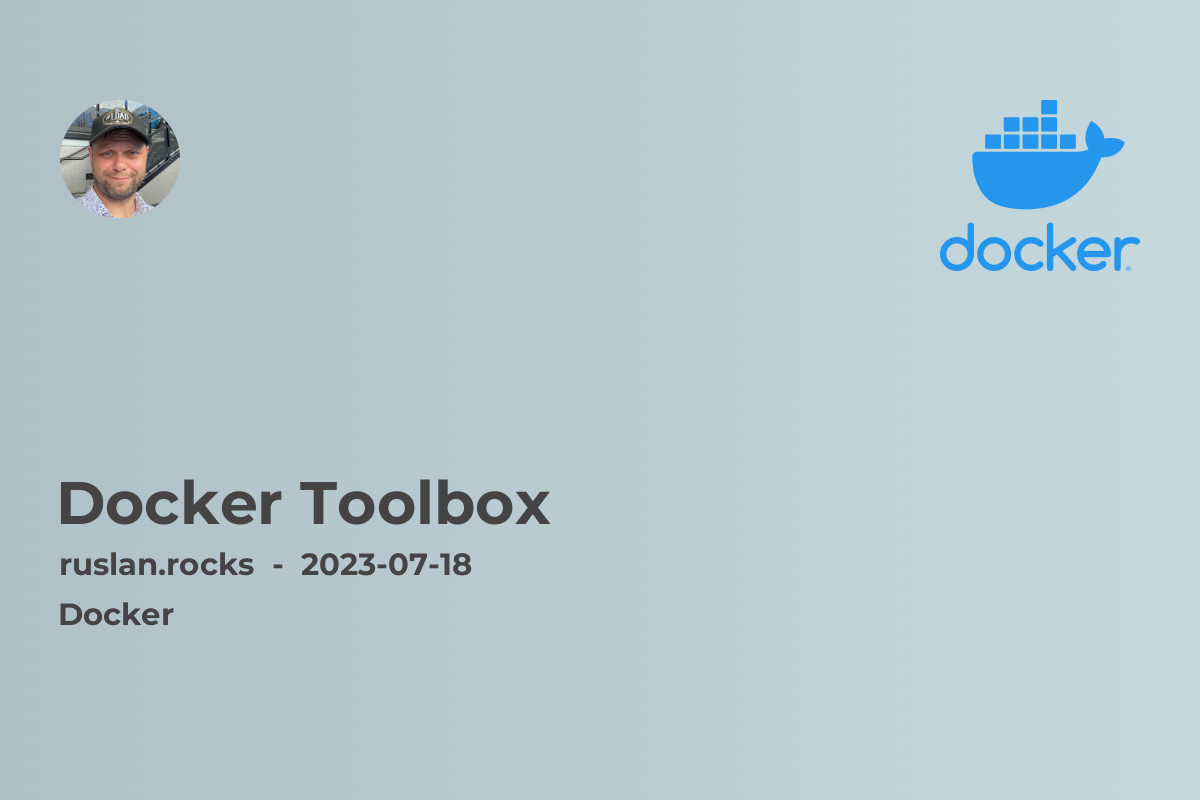- What is Docker Toolbox?
- How Does Docker Toolbox Work?
- Getting Started with Docker Toolbox
- Advantages of Using Docker Toolbox

Docker has revolutionized the way software is developed and deployed, allowing developers to package their applications into self-contained containers. However, managing and running Docker containers can sometimes be a complex task, especially for beginners. That's where Docker Toolbox comes in, offering a simple and streamlined solution for managing Docker containers on various platforms. In this article, we will explore what Docker Toolbox is, how it works, and why it is a valuable tool for developers.
What is Docker Toolbox?
Docker Toolbox is a portable software package that provides an easy-to-use graphical interface and command-line tools for managing Docker containers on Windows and MacOS. It includes Docker Machine, which allows you to create and manage Docker hosts, and Docker Compose, which simplifies the process of defining and running multi-container Docker applications. With Docker Toolbox, you can quickly set up a Docker environment and start deploying and managing containers with just a few clicks or commands.
Docker Toolbox is particularly useful for developers who are new to Docker and want a user-friendly way to get started. It eliminates the need for manual installation and configuration of Docker components, allowing you to focus on building and running your applications rather than dealing with the intricacies of Docker setup.
How Does Docker Toolbox Work?
Docker Toolbox utilizes a virtual machine (VM) approach to run Docker containers on Windows and MacOS. It uses Oracle VirtualBox, a free and open-source virtualization platform, to create a lightweight Linux VM called the "default" machine. This VM acts as the Docker host, running the Docker daemon and managing the execution of containers.
When you start Docker Toolbox, it automatically starts the "default" VM and sets up the necessary environment variables and networking configuration to allow communication between your host operating system and the Docker containers running in the VM. You can then interact with Docker using either the graphical interface provided by the Docker Quickstart Terminal or the command-line tools such as Docker CLI and Docker Compose.
Getting Started with Docker Toolbox
To start using Docker Toolbox, you need to download and install it on your Windows or MacOS machine. You can find the installation packages and detailed instructions on the official Docker Toolbox website.
Once installed, Docker Toolbox provides several tools that you can use to manage your Docker environment:
-
Docker Quickstart Terminal: This is a pre-configured command-line interface that launches a virtual terminal with all the necessary environment variables set. It allows you to run Docker commands and manage your containers and images directly from the command line.
-
Docker CLI: Docker Toolbox includes the Docker command-line interface (CLI), which provides a powerful set of commands for interacting with Docker. You can use the CLI to build, run, and manage containers, as well as to pull and push Docker images from and to Docker Hub.
-
Docker Compose: Docker Compose is a tool for defining and running multi-container Docker applications. With Docker Compose, you can create a YAML file that describes the services, networks, and volumes required by your application. Docker Compose then takes care of creating and managing the necessary containers and their interconnections.
-
Docker Machine: Docker Machine is a command-line tool for creating and managing Docker hosts (VMs). It allows you to create and manage multiple Docker hosts on different cloud providers or virtualization platforms. Docker Machine is particularly useful when you need to deploy your containers to different environments or when you want to set up a distributed Docker cluster.
Advantages of Using Docker Toolbox
Docker Toolbox offers several advantages that make it an attractive choice for developers:
-
Easy Installation: Docker Toolbox provides a simple and straightforward installation process, allowing you to get up and running with Docker quickly and effortlessly.
-
Cross-Platform Support: Docker Toolbox works on both Windows and MacOS, making it accessible to developers on various operating systems.
-
Complete Docker Environment: Docker Toolbox includes all the necessary components to run Docker, including the Docker engine, Docker Compose, and Docker CLI.
-
User-Friendly Interface: Docker Toolbox provides a graphical user interface (GUI) in the form of Docker Quickstart Terminal, making it easy for beginners to navigate and interact with Docker.
-
Portability: Docker Toolbox is a portable solution, which means you can easily move your Docker environment to different machines or share it with others.
In conclusion, Docker Toolbox is a valuable tool for simplifying the management and deployment of Docker containers. It provides an easy-to-use interface and essential command-line tools for configuring and running Docker environments on Windows and MacOS. By using Docker Toolbox, you can save time and effort and focus on what matters most – building and running your applications in containers.
Recommended Articles:
